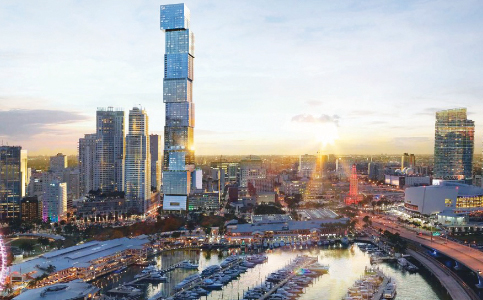as written by Robyn Griggs Lawrence from Multifamily Dive
House-sitting services for residents who travel extensively. Healthy building certifications. Boxing rings. Always-on-call concierges who know the name of every resident dog — and their favorite treats.
These are just a few of the services and amenities that luxury multifamily properties are offering to attract and retain high-earning renters, an income group that RentCafé recently found is growing faster than any other. To attract and retain tenants who are able—and willing—to shell out five-figure monthly rents, apartment operators have to provide the most desirable locations, spacious units with smart home features, brand-name luxury finishes and appliances and over-the-top resident services.
“The household value proposition is key,” said Douglas Ressler, manager of business intelligence for RentCafe’s sister division Yardi Matrix. When residents are shelling out upwards of $10,000 per month, they will constantly review the amenities and services they’re receiving to ensure they’re getting everything they’re paying for.
RentCafe’s analysis of Integrated Public Use Microdata Series data shows that the number of renters with incomes over $150,000 increased by 82% between 2015 and 2020, and the number of renter households with incomes north of $1 million tripled during that time period to reach a record high of 3,381 in 2020.
As high-income renters flood the market, developers are meeting demand. More expensive class A units account for much of the new multifamily supply this year, according to Fannie Mae.
Value beyond money
Higher interest rates, sky-high home prices and limited for-sale inventory are definitely contributing to the influx of high-income renters, many of whom don’t see value in the current housing market.
As the cost of buying a home has skyrocketed, it is now cheaper to rent in the vast majority of U.S. housing markets, according to a study by researchers at Florida Atlantic University and Florida International University — and indeed, RentCafe found that home prices were higher than the national average in nine of the 10 cities where high-income renters grew the most.
The wealthiest renters tend to prefer the coasts, and Ressler said high-income renters are most prevalent in major gateway cities such as New York City, Los Angeles, San Francisco and Chicago as well as “tertiary” cities, including Austin, Texas, and Seattle, where RentCafe found that they nearly tripled. Even the affluent struggled to keep up as home prices in Seattle increased 58% over five years. In the Emerald City, 17% of renters earn more than $150,000.
But Ressler said high earners — in particular, millennials, who make up the majority (28%) of millionaire renters — are gravitating toward apartments for reasons beyond money. Convenience, security, location and flexibility are also key, he said.
“When you really look at it, it’s not so much a matter of cost, but it’s really more about what you give value to—in other words, what are you looking for?” he said. “Maybe I don’t want to have a daily commute or I want facilities that match my lifestyle — gyms and things like that. When you really start adding it all up, you see that’s why the trend is growing.”


